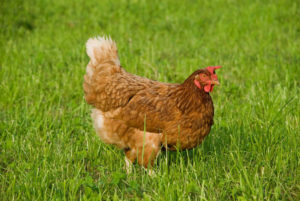Many chicken farms now use chicken cages to raise chickens on a large scale. In the breeding process, farmers can no longer manage the same as before. Many farmers have certain misunderstandings in the breeding process, which affect the healthy growth of chickens. The author concluded that it is a common misunderstanding of breeding, and now I will share it with farmers, hoping that farmers will pay attention to it.
1. Blindly introduce species. Many chicken farmers have the idea that the newer the breed, the better the chicken, regardless of the local natural conditions, breeding conditions and market demand for the introduced breed. There are also some professional chicken farmers whose prices are cheap, while ignoring the quality of the chicks.
2. Premature induction of labor. Not according to the production and development rules and nutritional needs of the laying hens, but blindly raising the feed standard, resulting in early production of the laying hens. Make the laying hens small body, premature aging and short duration of egg production peak, thus affecting egg weight and egg production rate.
3. Misuse of feed additives. Many chicken farmers regard feed additives as drugs to improve production capacity, and do not abuse them based on the content of various nutrients. This not only increases the cost of raising chickens, but also destroys the balance of various nutrients.

4. Overtime replenishment. Blindly adding some nutrients to the feed leads to an imbalance of various nutrients in the feed, thereby affecting the growth and development of chickens.
5. Sudden change of feed. If the feed is not changed according to the chicken’s usual habits, the chicken is not given a suitable transition period, and the feed is changed suddenly, which will easily cause the chicken’s stress response.
6. Blind medication. When many chicken farmers encounter chicken disease, they blindly use drugs without being diagnosed by veterinarians, thus delaying the disease and wasting the economy.
7. Long-term medication. Feeding various drugs for a long time to prevent chicken diseases will not only cause damage to the chicken’s kidneys and waste of drugs, but also make various bacteria resistant to drugs, which will seriously affect the subsequent treatment of the disease.
8. Disease and health polyculture. In the production of chickens, the sick chickens are not removed and isolated at any time, but the sick chickens and healthy chickens are still in the same pen and fed with the same feed, which leads to epidemic infection.
9. Do not pay attention to sanitation and disinfection. Chicken farmers are generally able to prevent chicken diseases, but pay little attention to the hygiene of the chicken house, leaving hidden dangers to various infectious diseases.
10. Neglect to eliminate low-yield and sick chickens. During the period from brooding to laying eggs, we only pay attention to the survival rate of chickens. Weak chickens and residual chickens are not eliminated in time, which wastes feed and reduces the efficiency of chicken raising.
The above ten points are the misunderstandings of chicken raising shared by the author. I hope that the above description can help all farmers. In addition, in the process of large-scale chicken breeding, farmers must have the concept of “prevention is more important than cure” and do a good job in disease prevention and control.